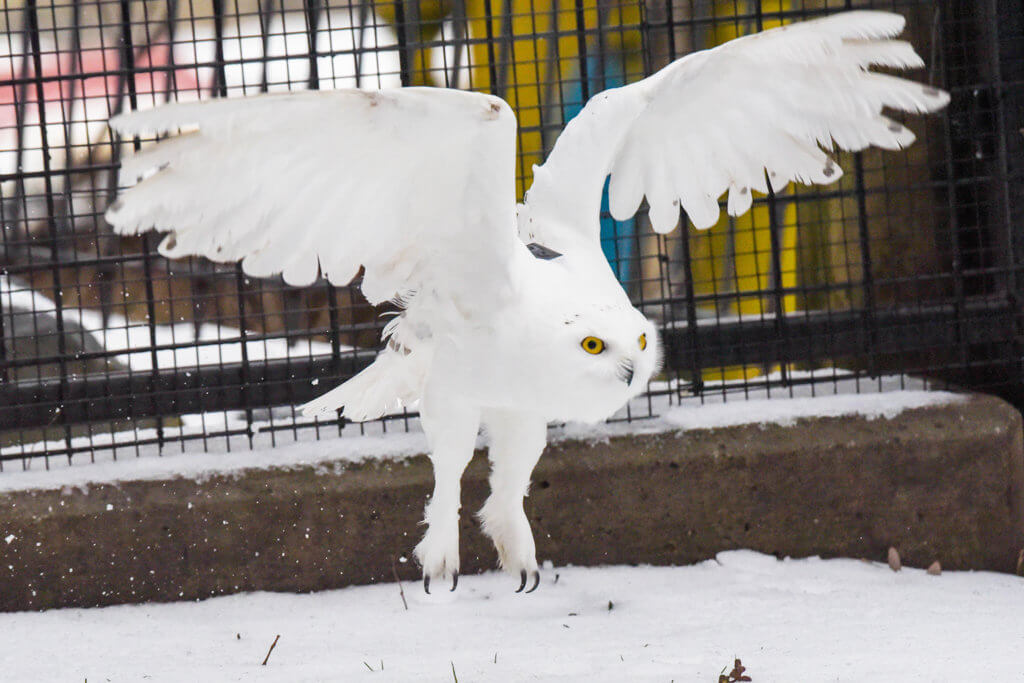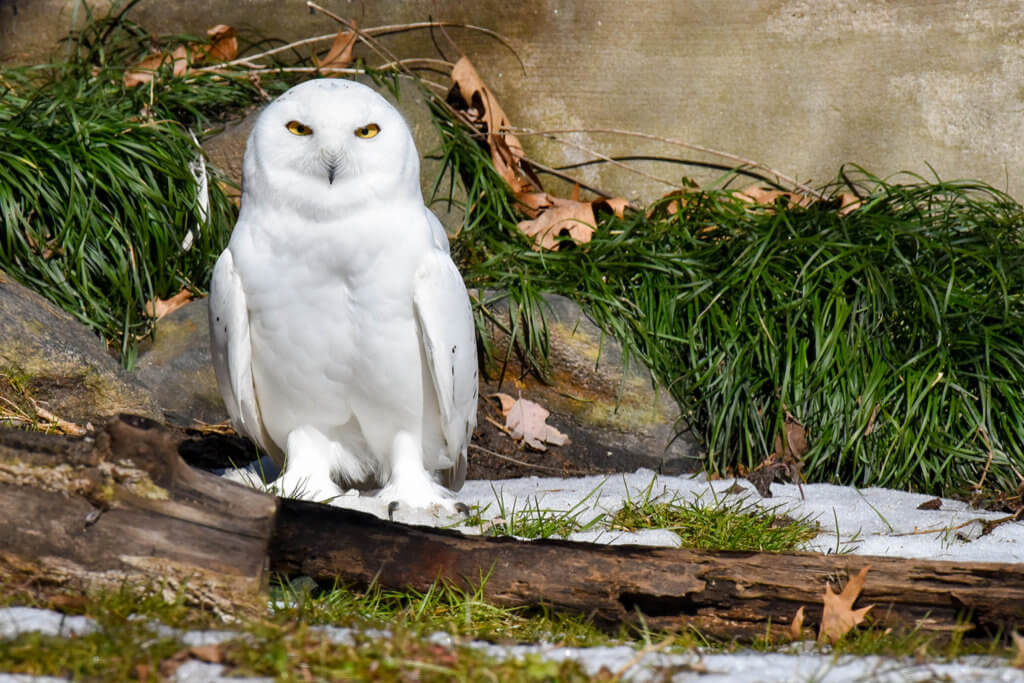Overview
Where I live
Snowy owls are among only a few species of animal that can survive year-round in the harsh Arctic. They live in the circumpolar north. They are nomadic and will travel great distances to wherever food is plentiful.
How I live there
Snowy owls sit silently and alone on the tundra, scanning for prey. When this large owl spots a meal, it rises on silent wings, swoops down, and snatches the unsuspecting prey. Snowy owls hunt mainly during the day, which is unusual for owls.
Like other Arctic dwellers, snowy owls are well adapted to severe cold. They are entirely covered in thick feathers that act as both windbreaker and down coat. A snowy owl’s feet are heavily feathered to protect against frostbite. Even in the worst blizzard, snowy owls can sit out in the open without seeking shelter.
Snowy owls are well camouflaged against their patchy, snow-covered tundra habitat. One can easily be mistaken for a mound of snow – until it swivels its head and locks its golden eyes on you. Females have more brown speckles than males have; when sitting on their nests during summer breeding season, they blend in well with their surroundings.
Making my mark
As predators, snowy owls impact – and are impacted by – their prey. This interdependence is especially evident between snowy owls and lemmings, the tiny rodents that are their most common prey. Each owl must catch the equivalent of 7 to 12 rodents per day to meet its food requirement; one snowy owl may consume 1,600 lemmings per year! A baby boom in lemmings in a given year can support a baby boom in snowy owls.
Raising young
Snowy owls arrive at their summer breeding grounds on the tundra in April and pair off. Females scrape nests in the ground and begin to lay eggs in late May and early June. They lay their eggs two days apart, which means that in a clutch of six eggs, the first chick might be two weeks old before the last chick hatches out. The male brings food to the female as she incubates the eggs. Once all the chicks have hatched, the parents take turns guarding them and bringing food. Snowy owls are protective parents: they will chase off humans, dogs, caribou, and even polar bears that come too close to their chicks. Parents will protect their chicks for about two months, until the chicks can fly and hunt on their own. Within a few more weeks, the brief Arctic summer comes to an end and each owl heads off on its own to face winter.
What threatens me
Adult snowy owls have few predators, but their eggs and chicks are vulnerable to Arctic foxes and jaegers. But the greatest threats that snowy owls face are attributable to humans. Snowy owls face death or severe injury when they collide with power lines, fences, or vehicles. They are also killed by gunshots.
Conservation
Every winter a number of snowy owls migrate south, beyond their typical Arctic range. Every four or five years in a phenomenon called an “irruption,” large numbers of these elusive birds flood from the Arctic into southern Canada and the U.S. Even rarer are mega-irruptions, in which vast numbers of snowy owls move south, reaching as far as Florida or Bermuda. The reasons for irruptions and mega-irruptions are not completely clear. Yet a group of scientists and organizations that includes the Maryland Zoo are working to find out through Project SNOWstorm. This large-scale research collaboration involves tracking snowy owls to better understand their winter journeys.
Taxonomy
- Kingdom: Animalia
- Phylum: Chordata
- Subphylum: Vertebrata
- Class: Aves
- Order: Strigiformes
- Family: Strigidae
- Genera: Bubo
- Species: scandiacus


